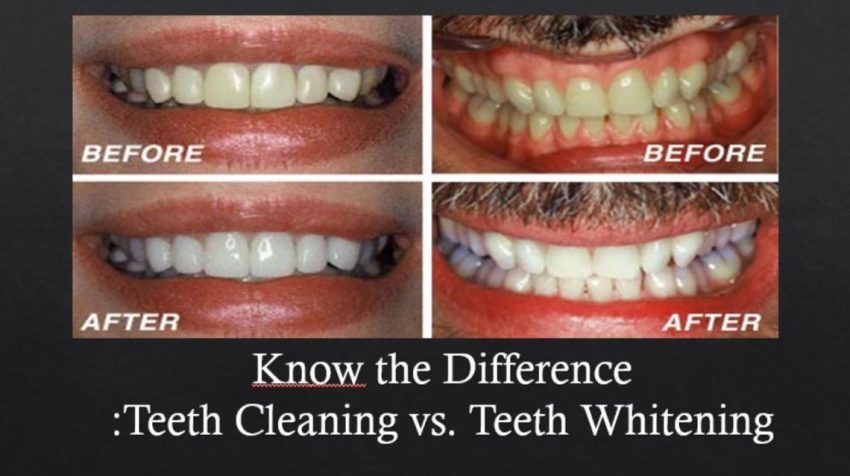Teeth Cleaning vs. Teeth Whitening: Understanding the Difference
Teeth cleaning and teeth whitening are two dental procedures that focus on improving the appearance and health of your teeth. While they both contribute to a brighter smile, they serve different purposes and involve distinct processes. Here’s a breakdown of the differences between teeth cleaning and teeth whitening:
Teeth Cleaning:
Purpose: Teeth cleaning, also known as dental prophylaxis, is a routine preventive procedure aimed at maintaining oral health by removing plaque, tartar, and debris from the teeth and gums.
Procedure:
- Scaling: The dental hygienist or dentist uses specialized instruments to carefully remove plaque and tartar buildup from the surfaces of the teeth, especially in areas that are hard to reach through regular brushing and flossing.
- Polishing: After scaling, the teeth are polished using a special paste to remove surface stains and smooth the tooth surfaces, making it more difficult for plaque to accumulate.
- Flossing and Fluoride Treatment: The procedure may also include flossing between the teeth and applying a fluoride treatment to strengthen the enamel and protect against cavities.
Frequency: Teeth cleaning is typically recommended every six months as part of regular dental check-ups to prevent gum disease, cavities, and other oral health issues.
Benefits: Teeth cleaning helps maintain healthy gums, prevent cavities, and remove surface stains. It contributes to overall oral hygiene and reduces the risk of gum disease.
Teeth Whitening:
Purpose: Teeth whitening, also known as teeth bleaching, is a cosmetic procedure designed to lighten the color of teeth and remove stains or discolorations.
Procedure:
- In-Office Whitening: A dentist applies a whitening gel containing hydrogen peroxide to the teeth and uses a special light or laser to activate the bleaching agent. This process is usually completed in a single visit.
- At-Home Whitening: Dentists may provide custom-made trays filled with a whitening gel for patients to use at home. These trays are worn for a specified period each day.
Types: Teeth whitening can be achieved through professional in-office treatments or at-home kits prescribed by a dentist.
Results: Teeth whitening can lighten the natural color of teeth by several shades, making them appear brighter and more youthful.
Considerations: It’s important to note that teeth whitening may not be effective for all types of discoloration, such as those caused by certain medications or underlying dental issues.
Key Differences:
- Purpose: Teeth cleaning focuses on removing plaque, tartar, and maintaining oral health, while teeth whitening aims to lighten the color of teeth and improve their appearance.
- Procedure: Teeth cleaning involves scaling, polishing, and preventive measures. Teeth whitening involves the use of bleaching agents to remove stains and discolorations.
- Frequency: Teeth cleaning is recommended every six months, while teeth whitening is done as needed to achieve the desired level of whitening.
In summary, teeth cleaning and teeth whitening serve different purposes in maintaining oral health and enhancing the aesthetic appearance of teeth. While teeth cleaning is a preventive procedure for maintaining oral hygiene, teeth whitening is a cosmetic procedure to achieve a brighter smile. It’s essential to consult with a dentist to determine which procedure is suitable for your individual needs and goals.










Leave a Reply